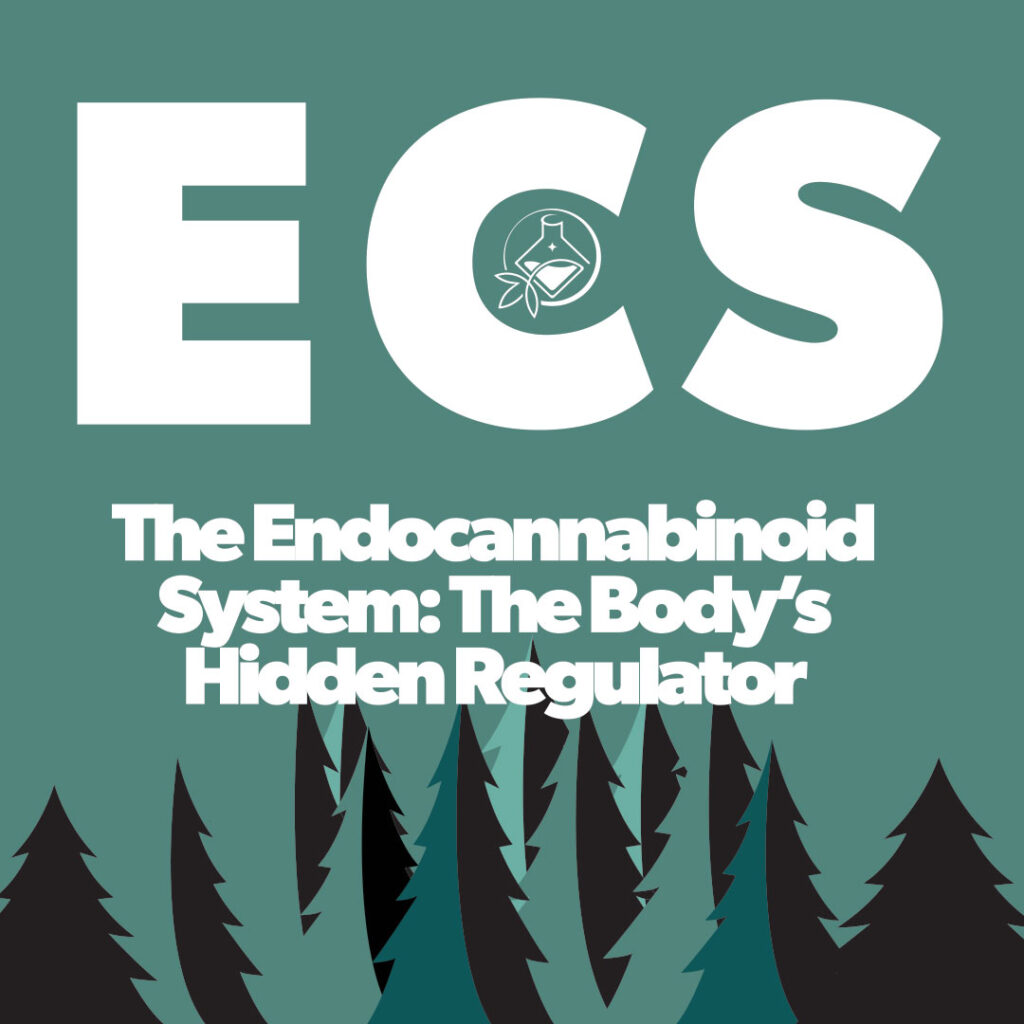The Endocannabinoid System: The Body’s Hidden Regulator
 The endocannabinoid system (ECS) is one of the most remarkable and essential systems in the human body, yet it remains relatively unknown to many. Discovered in the 1990s, this intricate network plays a crucial role in maintaining balance and harmony within the body, also known as homeostasis.
The endocannabinoid system (ECS) is one of the most remarkable and essential systems in the human body, yet it remains relatively unknown to many. Discovered in the 1990s, this intricate network plays a crucial role in maintaining balance and harmony within the body, also known as homeostasis.
In this article, we’ll explore the ECS, its components, functions, and how substances like cannabidiol (CBD) interact with it.
What Is the Endocannabinoid System?
The ECS is a biological system found in all vertebrates, including humans. Its primary role is to regulate various physiological processes and ensure the body functions optimally.
Key Components of the ECS
The ECS consists of three main parts:
- Endocannabinoids
These are naturally occurring molecules similar to cannabinoids (compounds found in cannabis) but are produced by the body. The two most studied endocannabinoids are:- Anandamide (AEA): Often called the “bliss molecule,” it’s linked to mood regulation and pain relief.
- 2-Arachidonoylglycerol (2-AG): Associated with immune function and overall homeostasis.
- Cannabinoid Receptors
These receptors are found throughout the body and are the sites where endocannabinoids bind to produce their effects. The two primary receptors are:- CB1 Receptors: Predominantly located in the brain and central nervous system, they influence mood, memory, appetite, and pain perception.
- CB2 Receptors: Found mostly in the immune system, they help regulate inflammation and immune responses.
- Enzymes
These enzymes break down endocannabinoids after they’ve fulfilled their function. The two key enzymes are:- FAAH (Fatty Acid Amide Hydrolase): Breaks down anandamide.
- MAGL (Monoacylglycerol Lipase): Breaks down 2-AG.
Functions of the ECS
The ECS is involved in a wide range of physiological processes, including:
- Mood Regulation: Balancing emotions and stress responses.
- Pain Management: Reducing inflammation and modulating pain signals.
- Appetite and Metabolism: Controlling hunger and energy balance.
- Sleep: Regulating sleep cycles.
- Immune System Function: Managing inflammation and immune responses.
How External Cannabinoids Interact with the ECS
Cannabinoids from plants, like THC and CBD, can also interact with the ECS:
- THC (Tetrahydrocannabinol): Binds directly to CB1 and CB2 receptors, creating psychoactive effects (the “high”) and therapeutic benefits like pain relief.
- CBD (Cannabidiol): Does not bind directly to receptors but influences them indirectly, promoting balance and enhancing the ECS’s function without psychoactive effects.
The ECS and Homeostasis
Homeostasis is the body’s ability to maintain a stable internal environment despite external changes. The ECS plays a pivotal role in this process by adjusting and fine-tuning responses in various systems, ensuring balance is maintained.
For example:
- If the body is overheated, the ECS helps regulate temperature.
- During stress, it helps calm the nervous system.
Supporting Your ECS
While the ECS functions naturally, lifestyle choices can support its effectiveness:
- Nutrition: Omega-3 fatty acids, found in fish and flaxseed, are precursors for endocannabinoids.
- Stress Management: Practices like meditation and yoga can enhance ECS activity.
- Cannabinoids: Products like CBD oil may supplement ECS function and help address imbalances.
Closing Thoughts
The endocannabinoid system is a powerful and complex regulator of human health. Understanding its role opens the door to targeted wellness strategies and potential therapies for numerous conditions. Whether through lifestyle adjustments or the thoughtful use of CBD, supporting your ECS can lead to better balance and overall well-being.
